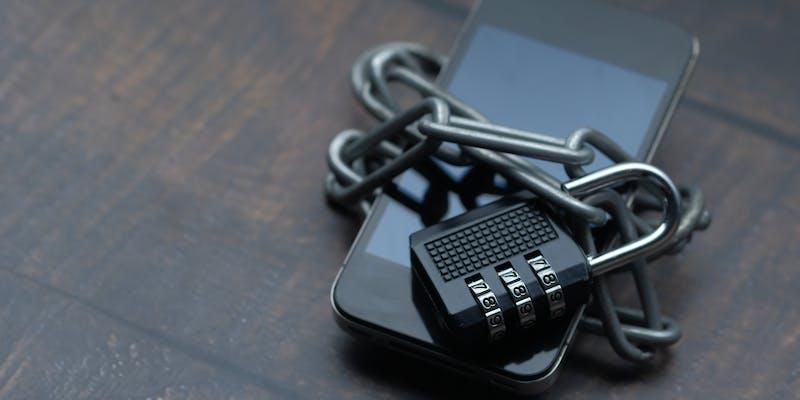Guide to Setting Up Two-Factor Authentication
Dec 08, 2023 By Triston Martin
2 Two-factor verification is increasingly common, particularly with accounts containing sensitive information. To verify your identity, set up 2 factor authentication using two methods. It's crucial to protect your online presence and prevent unauthorized access.
A password and a phone or physical key are used in two-factor or multi-factor authentication to verify your identity. This may involve choosing a website image or calling to confirm access. Some websites recognize your browser or device.
The first broker to use this method, Interactive Brokers, used a code card and now uses a mobile key with a PIN, fingerprint, or facial recognition. The extent of two-factor authentication's financial account security improvement is unknown.
While multi-step verification provides security, its efficacy hasn't been sufficiently studied. Identity theft remains a significant issue.
Two-factor Authentication: How Safe Is It?
Dr. Yinglian Xie, DataVisor’s CEO, says 2FA may not be as secure as thought. It's standard security, but experts warn it's hackable. Personal Capital's Chief Information Security Officer, Maxime Rousseau, recommends using knowledge-based, biometric, and physical factors to implement 2FA. Some companies simply add security questions to password requirements, which is less secure.
Rousseau notes that industry-standard 2FA uses a password and SMS code. To prevent phone hijacking, more security-conscious companies are using app-based codes. An increase in SIM swapping, a standard mobile phone hijacking method, cost the FBI $68 million in 2021.
Dr. Xie warns that set up 2 factor authentication becomes less effective as mobile technologies become more attackable. A Tufts University cybersecurity policy professor, Dr. Josephine Wolff, notes the lack of 2FA effectiveness research.
Device-based challenges like SMS codes block 96% of phishing attacks, according to a 2019 Google study. Since most financial institutions don't disclose user account compromise data, 2FA's security effectiveness is unclear.
Google's 2022 study found that multi-factor authentication may not protect user data as expected. Millions of users underwent this extra verification step, but account compromises only dropped 50%. The initiative did improve security, though.
How to Implement Two-Step Verification in Your Financial Accounts

Identifying Accounts for 2-Factor Authentication
To start, figure out which accounts require 2 factor authentication. Any web-connected account can be hacked. Healthcare, banking, financial services, insurance, and e-commerce should prioritize two step verification.
Protecting customer accounts from unauthorized access requires this extra security. The goal is to protect sensitive data, and these industries are prime targets for cyber attacks because they handle personal and financial data.
Selecting the Right 2-Factor Authentication Method
Select the best set up 2 factor authentication method. SMS or voice call verification, authentication apps, push notifications, biometrics, and physical security tokens are options. Each has pros and cons.
For instance, though secure, hardware tokens can be lost and costly. On the other hand, SMS-based 2 factor authentication is more affordable and widely accessible. Consider your business's specific needs and resources when deciding which method to set up for 2 factor authentication.
Training Employees on 2-Factor Authentication
It's essential to teach your employees about 2 factor authentication. They should understand its role in protecting the business and how to use it effectively.
Start by making it mandatory for administrative accounts and gradually extend it to all areas. Employee awareness is critical, not only for internal security but also for educating customers about safeguarding their accounts.
Testing Your 2-Factor Authentication Setup
After setting up the system, test it thoroughly. Make sure it integrates smoothly with your existing processes. Assemble a team to evaluate the system's effectiveness and identify potential improvements.
Consider investing in additional hardware or enhancing online support for issues like failed sign-ins or lost devices. This demonstrates to your customers that you prioritize the security of their data.
Educating Users on Secure Practices
Finally, inform your users about the importance of strong passwords. Advise them against using easily guessable passwords, like pet names or birthdays.
Also, emphasize the importance of not sharing personal details with anyone posing as customer support. This guidance helps to reinforce the effectiveness of the 2 factor authentication system you've implemented.
Loopholes in Two-Factor Authentication

Gary Zimmerman, CEO of MaxMyInterest, recommends multi-factor authentication, including 2 factor authentication, to reduce account hacking. Some two-factor authentication methods are less secure, he warns. For instance, using the same email and password for financial accounts is risky. These details could give hackers access to your email and financial statements. This is like unintentionally giving a thief access to your house and safe.
Breaking two-factor authentication setups is expected, according to Dr. Wolff. Cybercriminals create fake websites to look natural. They then send fake bank or broker emails warning of account expiration or missing information. Unknowingly, users are directed to counterfeit sites where their logins are stolen.
After obtaining these details, the hacker logs into the legitimate bank site and sends a one-time code via text. The user unknowingly enters this code on the fraudulent site, which the hacker uses on the site to gain account access.
Balancing Security and User Convenience in Financial Accounts
While securing financial accounts is critical, users often express frustration over two-factor authentication. A 2017 survey by SecurAuth Corporation involving cybersecurity experts revealed that 74% of organizations using two-factor authentication faced user complaints about the process. This highlights a common sentiment among users who find setting up and using two-factor authentication cumbersome.
Despite this, safeguarding financial information is not lost on most people. Duo Labs found in their 2021 study that 93% of individuals regard the security of their financial accounts as highly important to protect against unauthorized access. This demonstrates a clear preference for security over convenience in critical matters.
Interactive Brokers' Sanders suggests an ideal solution would be a security method that blends minimal steps with rapid authentication without compromising the safety of financial accounts. This reflects the need to balance user-friendliness and stringent security measures in economic systems.
Adopting two-step verification processes is becoming increasingly common despite some resistance. Duo Labs' 2021 survey noted a significant increase in the use of two-factor authentication: 79% of respondents used it, compared to only 53% in 2019. This shift indicates a growing recognition of the importance of additional security layers, like setting up two-factor authentication, even if they are sometimes seen as an inconvenience.








